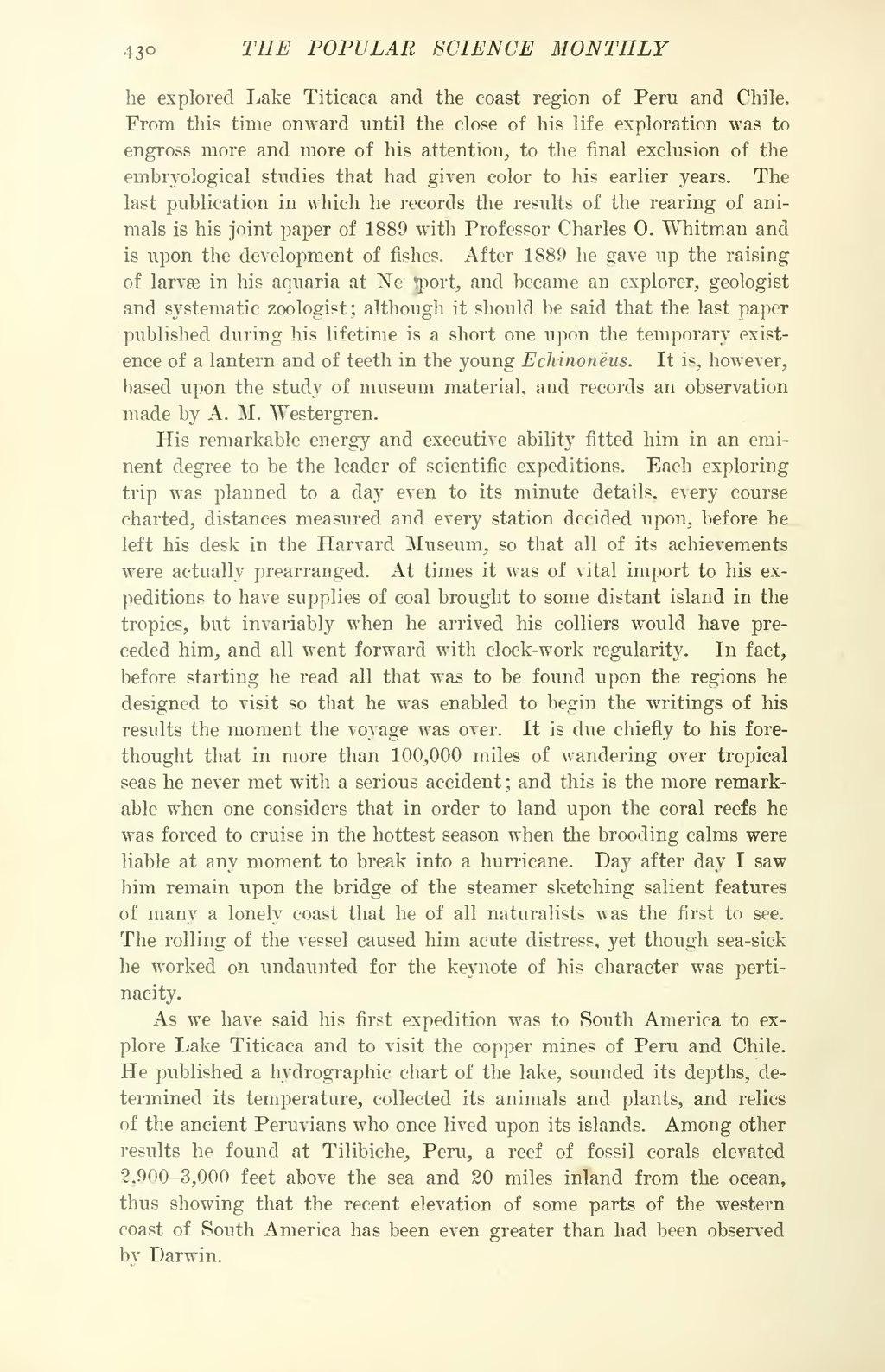he explored Lake Titicaca and the coast region of Peru and Chile. Prom this time onward until the close of his life exploration was to engross more and more of his attention, to the final exclusion of the embryological studies that had given color to his earlier years. The last publication in which he records the results of the rearing of animals is his joint paper of 1889 with Professor Charles O. Whitman and is upon the development of fishes. After 1889 he gave up the raising of larvae in his aquaria at Newport, and became an explorer, geologist and systematic zoologist; although it should be said that the last paper published during his lifetime is a short one upon the temporary existence of a lantern and of teeth in the young Echinonëus. It is, however, based upon the study of museum material, and records an observation made by A. M. Westergren.
His remarkable energy and executive ability fitted him in an eminent degree to be the leader of scientific expeditions. Each exploring trip was planned to a day even to its minute details, every course charted, distances measured and every station decided upon, before he left his desk in the Harvard Museum, so that all of its achievements were actually prearranged. At times it was of vital import to his expeditions to have supplies of coal brought to some distant island in the tropics, but invariably when he arrived his colliers would have preceded him, and all went forward with clock-work regularity. In fact, before starting he read all that was to be found upon the regions he designed to visit so that he was enabled to begin the writings of his results the moment the voyage was over. It is due chiefly to his forethought that in more than 100,000 miles of wandering over tropical seas he never met with a serious accident; and this is the more remarkable when one considers that in order to land upon the coral reefs he was forced to cruise in the hottest season when the brooding calms were liable at any moment to break into a hurricane. Day after day I saw him remain upon the bridge of the steamer sketching salient features of many a lonely coast that he of all naturalists was the first to see. The rolling of the vessel caused him acute distress, yet though sea-sick he worked on undaunted for the keynote of his character was pertinacity.
As we have said his first expedition was to South America to explore Lake Titicaca and to visit the copper mines of Peru and Chile. He published a hydrographic chart of the lake, sounded its depths, determined its temperature, collected its animals and plants, and relics of the ancient Peruvians who once lived upon its islands. Among other results he found at Tilibiche, Peru, a reef of fossil corals elevated 2,900-3,000 feet above the sea and 20 miles inland from the ocean, thus showing that the recent elevation of some parts of the western coast of South America has been even greater than had been observed by Darwin.
